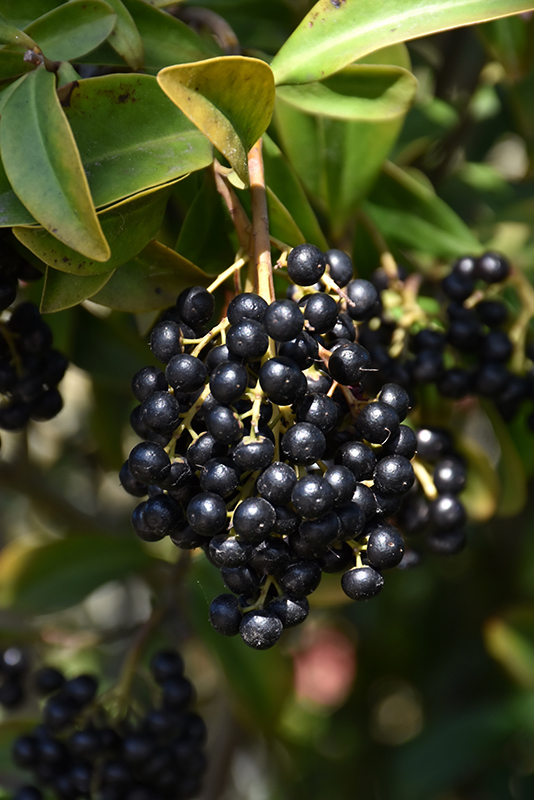|
|
|
| home | about us | loyalty program | products | directions | warranty | garden splendor ® | plant collector | landscaping | |
| Plant Finder | |
|
Height: 20 feet Spread: 15 feet
Sunlight:
Hardiness Zone: 10a Other Names: syn. Ardisia elliptica, Tagpo Description: A beautiful rare large shrub or small tree, adorned with frothy panicles of small pink to white flowers in summer; stunning clusters of bright red berries turn black as they persist; invasive in warm climates; best in full sun and well-drained soil Ornamental Features Marlberry features showy clusters of fragrant white star-shaped flowers with shell pink overtones at the ends of the branches from mid spring to mid summer. It features an abundance of magnificent red berries from late summer to late winter, which fade to black over time. It has bluish-green evergreen foliage. The glossy pointy leaves remain bluish-green throughout the winter. Landscape Attributes Marlberry is a dense multi-stemmed evergreen shrub with an upright spreading habit of growth. Its average texture blends into the landscape, but can be balanced by one or two finer or coarser trees or shrubs for an effective composition. This shrub will require occasional maintenance and upkeep, and is best pruned in late winter once the threat of extreme cold has passed. It is a good choice for attracting birds to your yard. Gardeners should be aware of the following characteristic(s) that may warrant special consideration;
Marlberry is recommended for the following landscape applications;
Planting & Growing Marlberry will grow to be about 20 feet tall at maturity, with a spread of 15 feet. It has a low canopy with a typical clearance of 1 foot from the ground, and is suitable for planting under power lines. It grows at a fast rate, and under ideal conditions can be expected to live for 40 years or more. This is a self-pollinating variety, so it doesn't require a second plant nearby to set fruit. This shrub does best in full sun to partial shade. It does best in average to evenly moist conditions, but will not tolerate standing water. This plant should not require much in the way of fertilizing once established, although it may appreciate a shot of general-purpose fertilizer from time to time early in the growing season. It is particular about its soil conditions, with a strong preference for poor, acidic soils. It is somewhat tolerant of urban pollution. This species is not originally from North America. This is a tender plant that may require additional winter protection in our area; contact the store for more information. Characteristics
Applications
Features & Attributes
|
|
